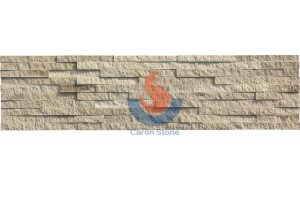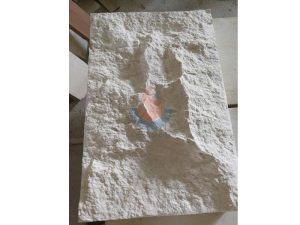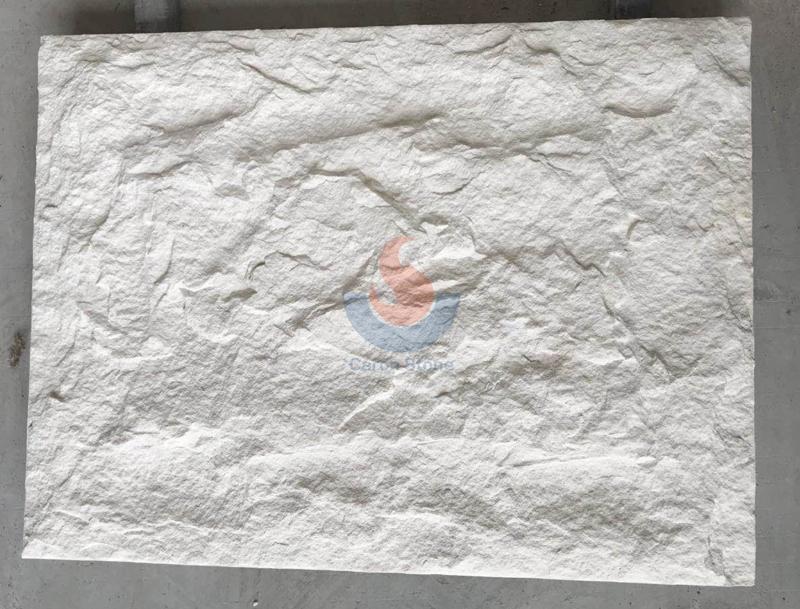Limestone, a precious gift from nature, has not only brought endless inspiration to the world of architecture and decoration, but has also become an ideal choice for many people’s homes and commercial spaces. Every limestone piece seems to be a work of beauty because of its unusual texture and natural grain. However, with the several kinds of limestone available on the market, how should one select the most appropriate stone? How can one find the limestone’s traits and quality? These questions often bother consumers. Today we will go over limestone’s classification and identification methods to assist you in selecting the stone just for your need.

Portuguese Beige Limestone Splitted Culture Stone
classification of limestone
Limestone is composed of deposited calcium carbonate minerals. Different minerals and techniques of formation allow limestone to be split into several primary varieties:
Fossil limestone
Usually including a lot of old biological remains, fossil limestone is a unique kind of limestone. These fossils not only give the stone a distinctive look but also offer it historical and personal resonance. This stone is often used for building exterior walls or decorative panels, especially for those who like natural and classical styles.
crystal limestone
The main feature of crystalline limestone is that its surface presents a shiny crystal structure. This stone has a glossy surface and great visual impacts since of the crystallization process throughout its development. High-end decoration and indoor flooring for which crystalline limestone is appropriate will help to accentuate the whole style of the area.
Porous limestone
The porous structure of porous limestone gets it its name. This stone has a high water absorption and easily attracts dirt and moisture. Although this quality could be a drawback for some uses, its light texture and natural feel are usually excellent for garden walks or decorative walls.
Compacted limestone
Less pores and a tighter structure make compacted limestone more wear and tear resistant. High activity locations like commercial floor and countertop surfaces frequently call for it. Compacted limestone is not only durable, but also maintains its beauty for a long time.
identifying limestone
When choosing limestone, it is important to understand its quality and characteristics. These helpful identification cues will enable you to select the ideal stone:
Look at the appearance
Good limestone should have a smooth surface free of visible defects or fissures. Various kinds of limestone have varied textures and colors. Observing the uniformity of the stone’s texture can help you determine its quality.
Test absorption of water
The porous nature of limestone determines its water absorption. Drop a drop of water on the stone’s surface and track whether the drop is fast absorbed. Should the water absorption be too strong, the stone might be rather porous and fit for use in less humid surroundings.
Knocking sound
High-quality limestone will sound sharp when you softly tap the stone; low-quality stone could sound dull. This is thus because the acoustic traits of the stone will depend on its density and homogeneity.
Check hardness
When you scratch high-quality limestone with a hard object, it shouldn’t readily show. High activity areas like floor and countertops call for a limestone with additional hardness.
Ask for professional advice
When choosing limestone, it is also very useful to ask for advice from professionals or stone suppliers. Depending on your requirement and surroundings, they can suggest the most appropriate stone kind and treatment approach.
Choosing the right limestone
The actual surroundings in which limestone will be employed determines not only its appearance but also its choice. Here are some tips to help you make a wise choice:
Consider environmental factors
Choosing a stone with a higher density may help to lower moisture absorption and dirt collection if you intend to use limestone in a humid location, say a bathroom or kitchen. Perhaps more suited in a dry environment is porous limestone.
Matching style
The limestone’s color and texture need to complement the general architectural taste. For classical style design, for instance, fossil limestone is appropriate; for modern and high-end interior settings, crystalline limestone is appropriate.
Budget considerations
Prices vary among limestone varieties. Your budget will help you to choose a reasonably priced stone without sacrificing the quality or lifetime of the stone.

Split face white limestone 30×15
With its natural beauty and diverse types, limestone provides a rich choice for various construction and decoration needs. But given the several kinds and variations of limestone available, selecting the correct stone is not easy. By understanding the classification of limestone, mastering the identification skills, and selecting stones based on actual needs, we can ensure that we choose limestone that is both beautiful and practical. Allow limestone to be a lovely accent to your room whether your preferred style is vintage or modern.





